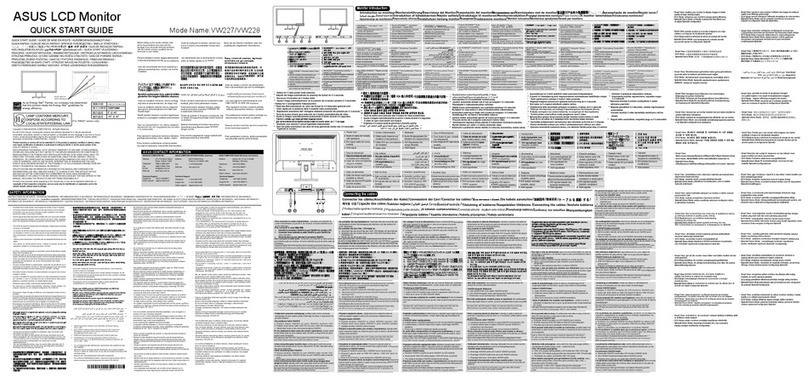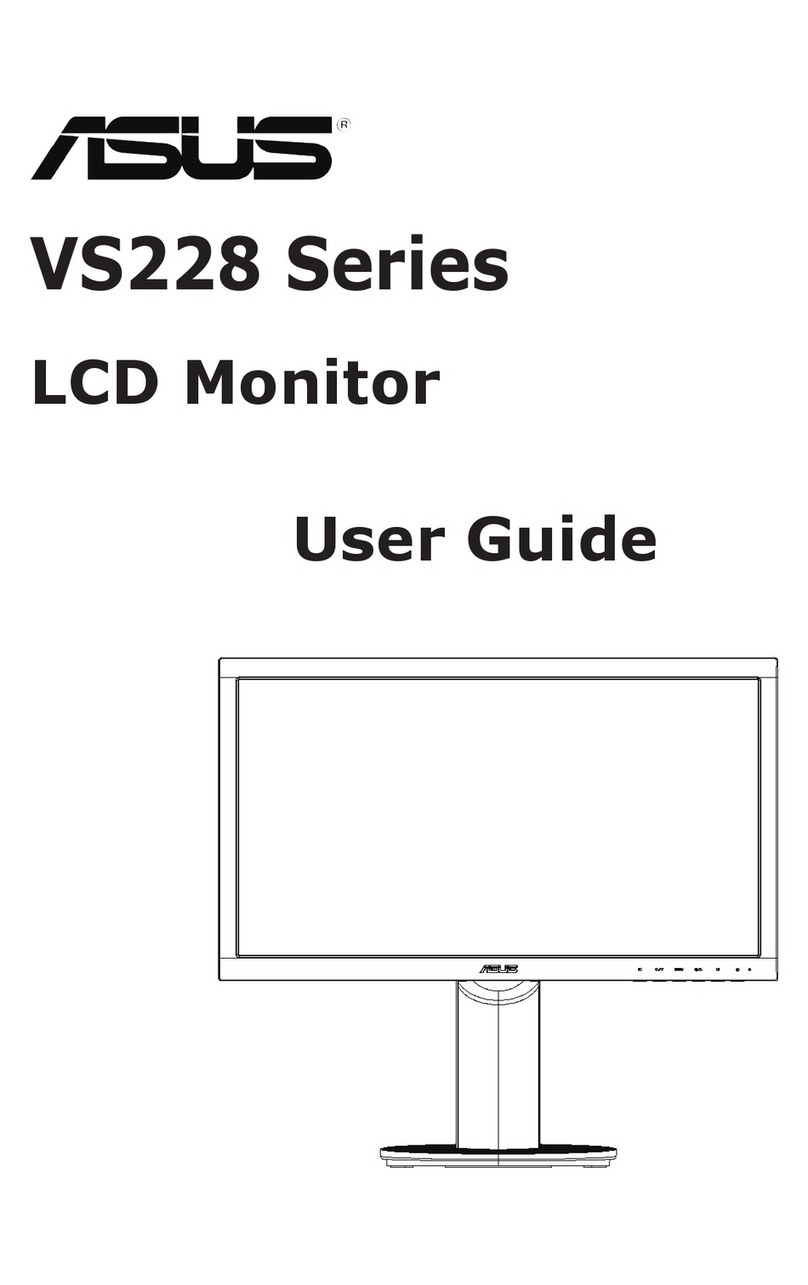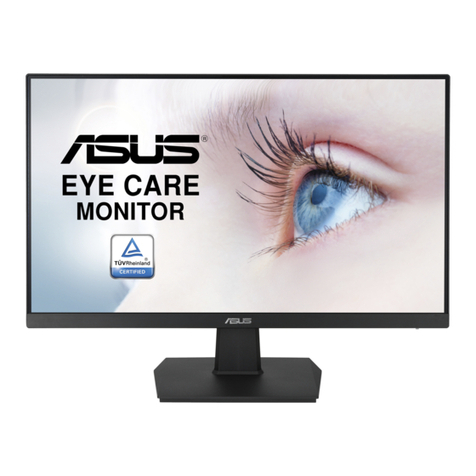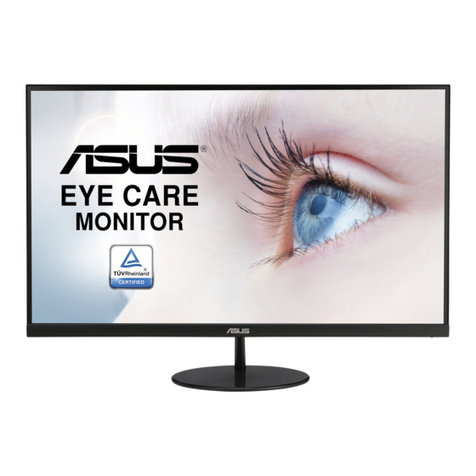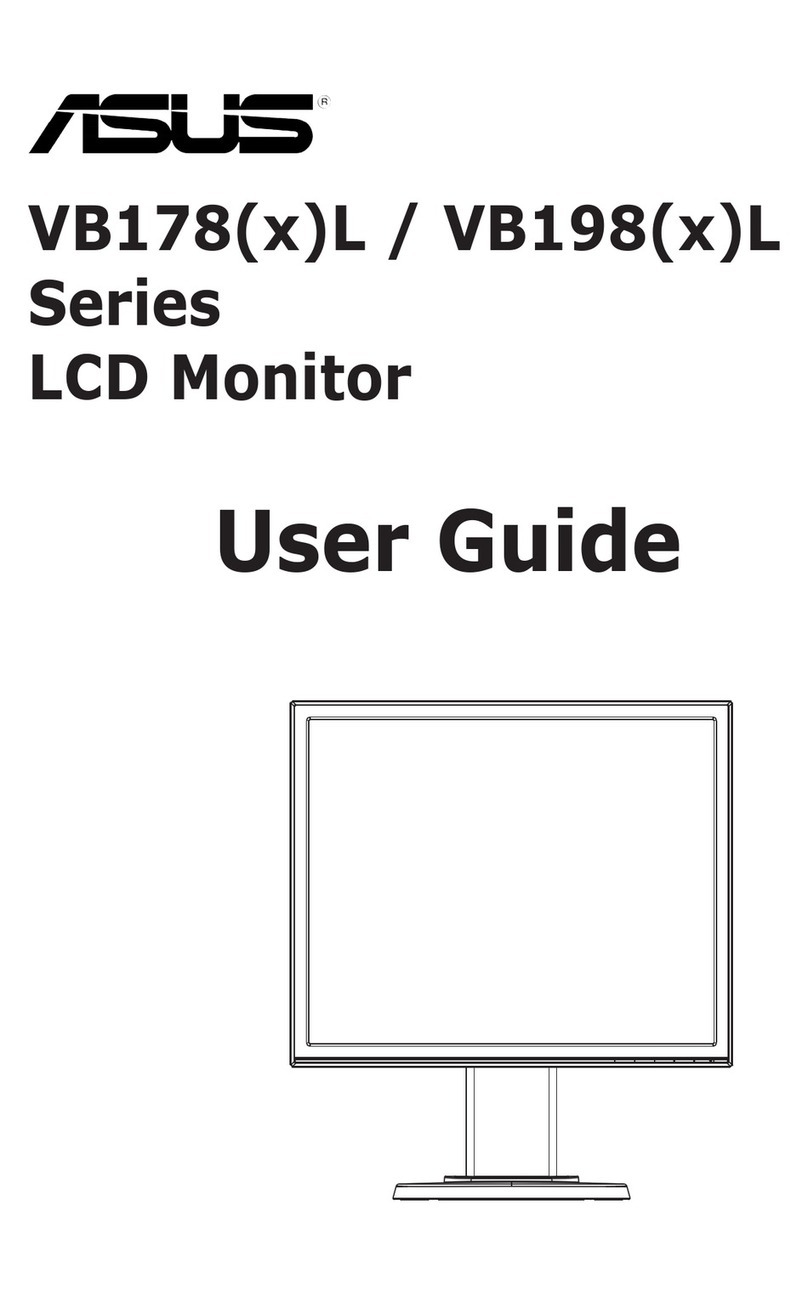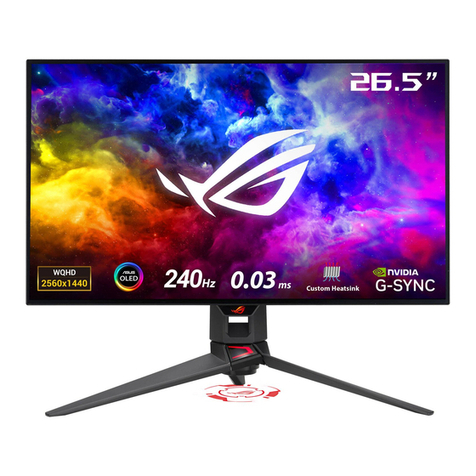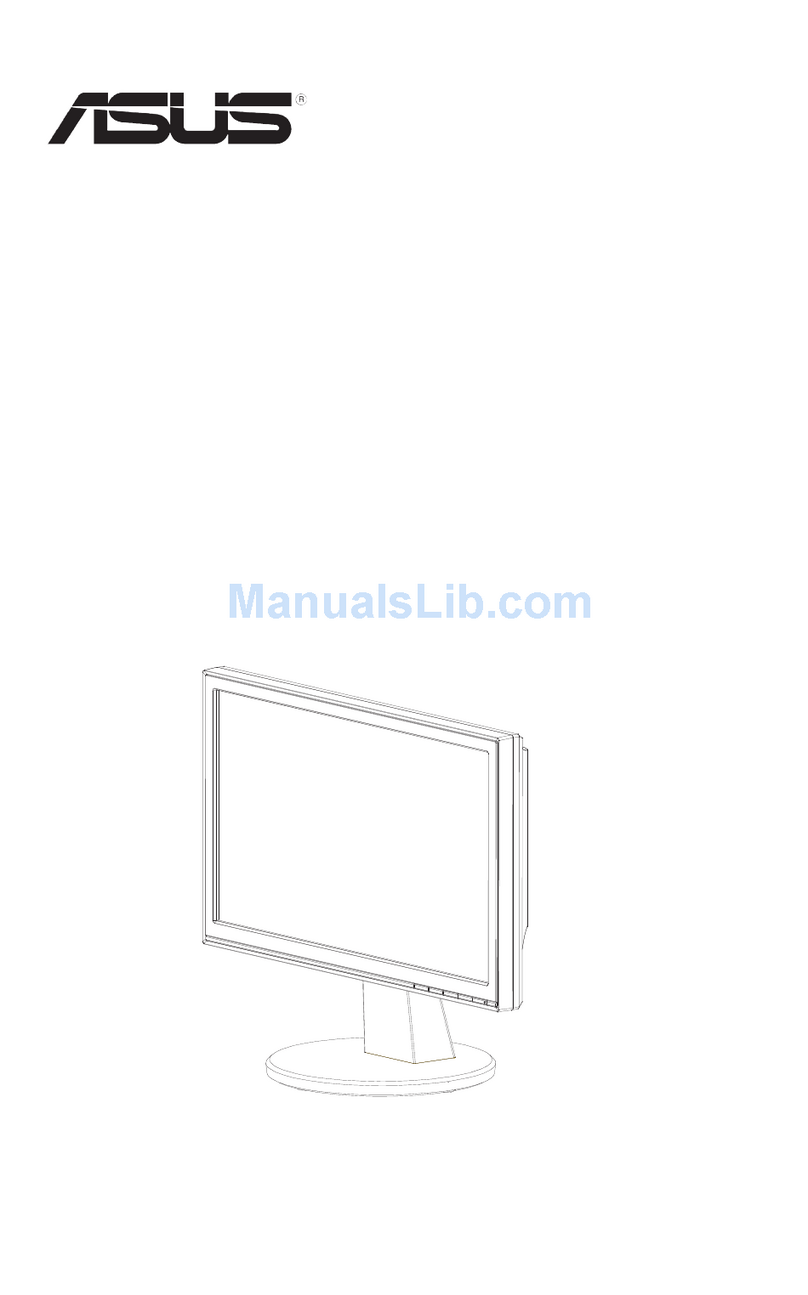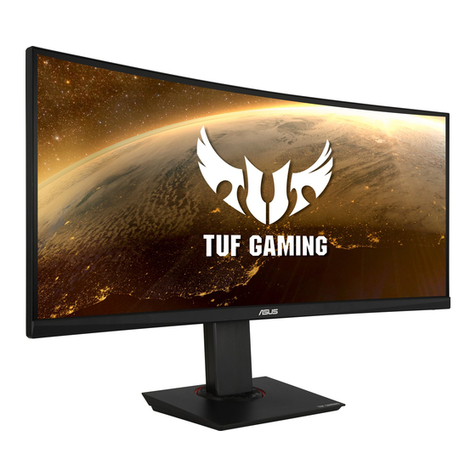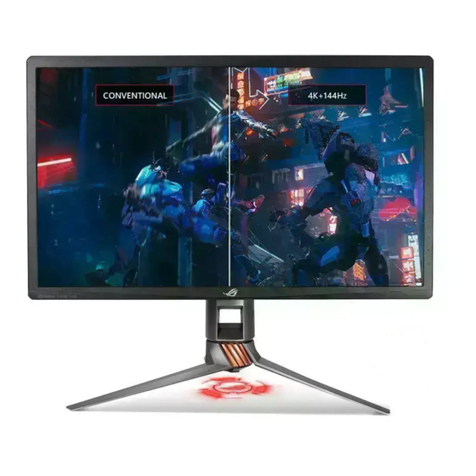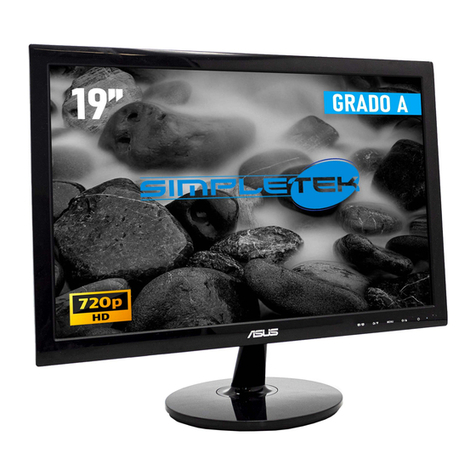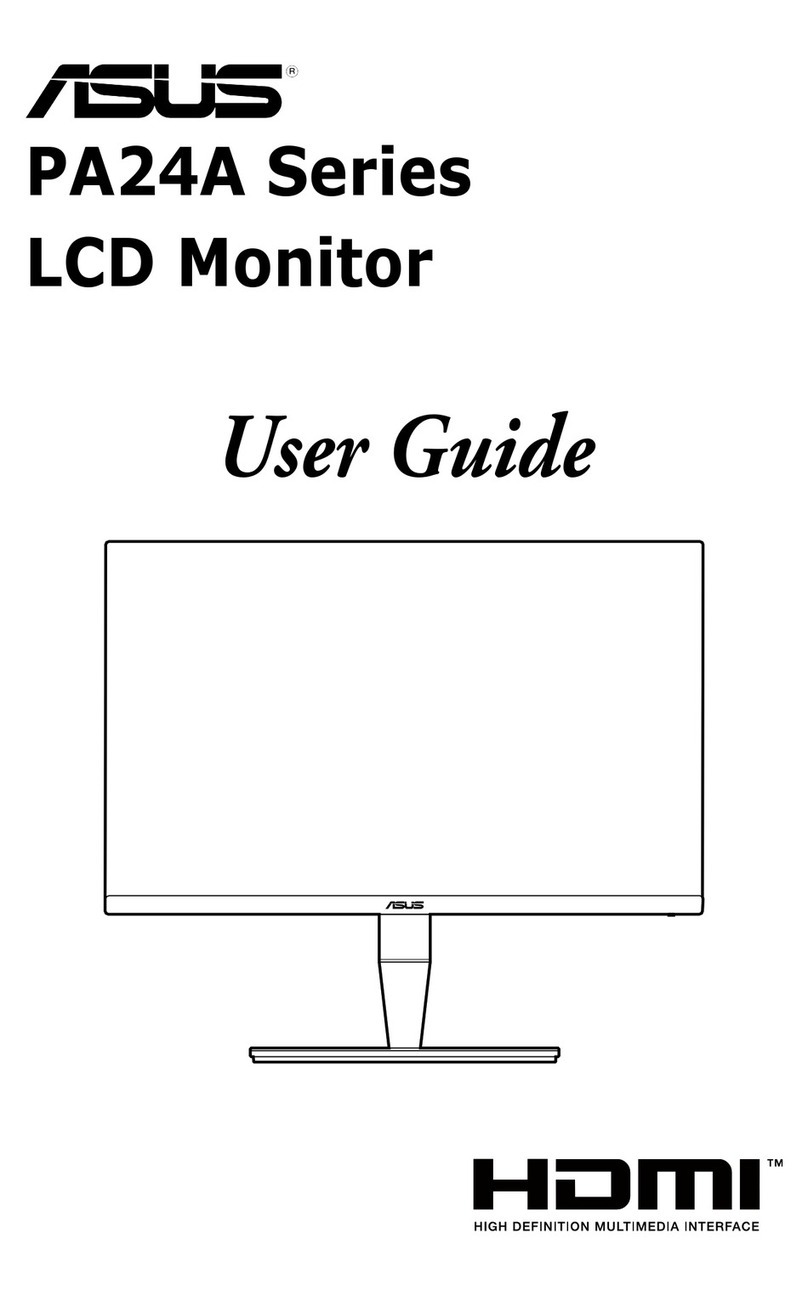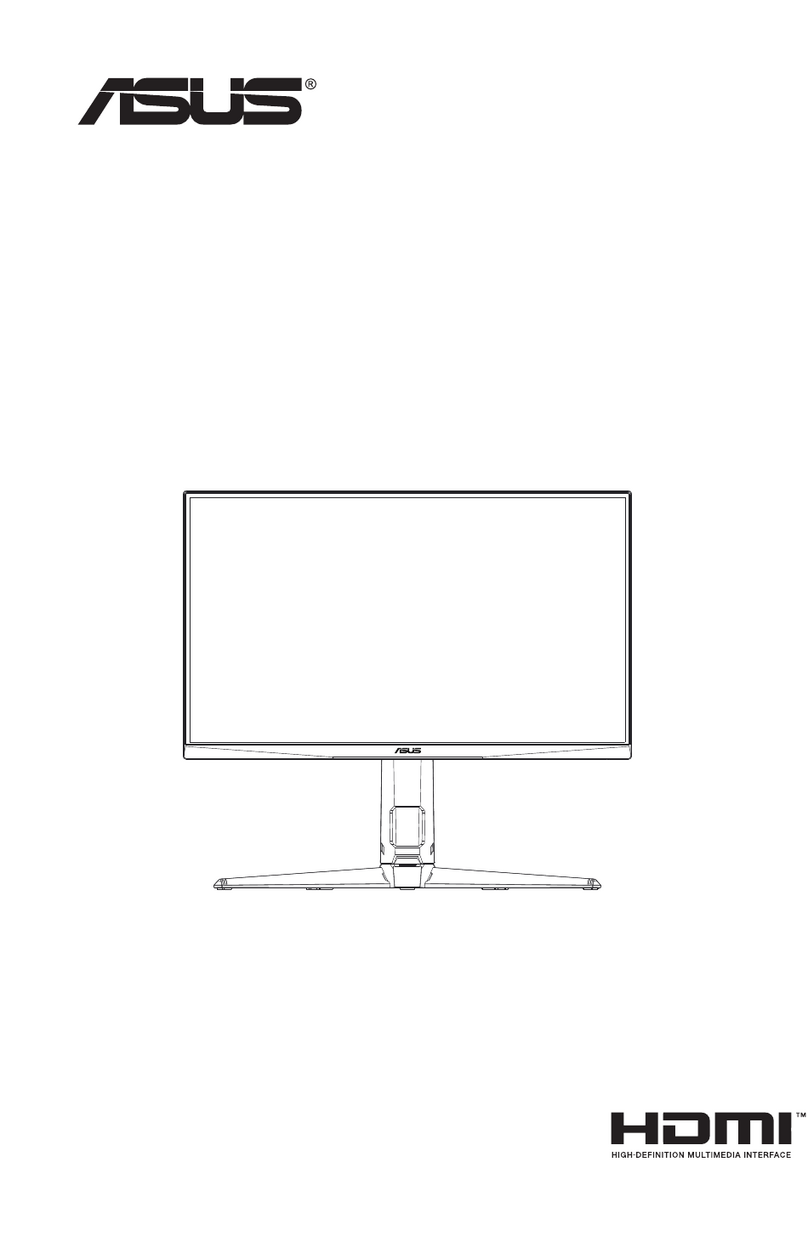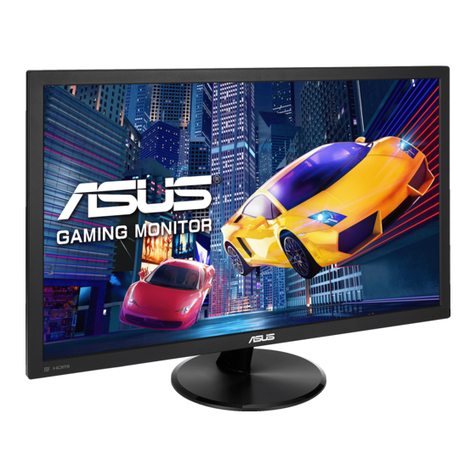
- The TFT color LCD panel used in this monitor is made with the
application of high precision technology. However, there may
be minute points on the screen where pixels never light or are
permanently lit. Also, if the screen is viewed from an acute angle
there may be uneven colors or brightness. Please note that these
are not malfunctions but common phenomena of LCDs and will
not aect the performance of the monitor.
- Do not display a still picture for a long period, as this could cause
a residual image.
- Never rub or tap the monitor with hard objects.
- Please understand that ASUSTek Computer Inc. bears no
responsibility for errors made during use by the customer or a
third party, nor for any other malfunctions or damage to this
product arising during use, except where indemnity liability is
recognized under law.
- This monitor and its accessories may be upgraded without
advance notice.
- Do not use the monitor where there is a lot of dust, where
humidity is high, or where the monitor may come into contact
with oil or steam, as this could lead to re.
- Ensure that the monitor does not come into contact with water
or other uids. Ensure that no objects such as paper clips or pins
enter the monitor as this could lead to re or electric shock.
- Do not place the monitor on top of unstable objects or in unsafe
places. Do not allow the monitor to receive strong shocks or to
strongly vibrate. Causing the monitor to fall or topple over may
damage it.
- Do not use the monitor near heating equipment or in places
where there is likelihood of high temperature, as this may lead to
generation of excessive heat and outbreak of re.
- Do not use the monitor in places where it may be exposed to
direct sunlight.
- Images cannot be rotated on this monitor.
When using in portrait orientation, you will need to prepare
appropriately orientated content in advance.
- The AC outlet shall be installed near the equipment and shall be
easily accessible.
The Power Cord and AC adapter
- Use only the power cord and AC adapter supplied with the
monitor.
- When handling the AC adapter, observe the following: Incorrect
handling may result in re, electric shock, or injury.
• Do not drop the AC adapter or subject it to impact.
• Never disassemble the AC adapter. It contains high voltage
parts that are dangerous to touch.
• The AC adapter is for indoor use only. Do not use it outside.
• Do not use the supplied AC adapter with other devices.
- Do not damage the power cord and AC adapter nor place heavy
objects on it, stretch it or over bend it. Also, do not add extension
cords. Damage to the cord may result in re or electric shock.
- Do not use the power cord with a power tap.
Adding an extension cord may lead to re as a result of
overheating.
- Do not remove or insert the power plug with wet hands. Doing
so could result in electric shock.
- Unplug the power cord if it is not used for a long time.
-
Do not attempt to repair the power cord if it is broken or
malfunctioning. Refer the servicing to the service representative.
- Do not stay in contact with the parts of the product and the AC
adapter that become hot for long periods of time.
Doing so may result in low-temperature burns.
-
Do not fasten the AC adapter to the monitor or other equipment.
Doing so may result in re and electrical shock.
Manual Scope
- Microsoft, Windows and Internet Explorer are registered
trademarks of Microsoft Corporation.
- The terms HDMI and HDMI High-Denition Multimedia Interface,
and the HDMI Logo are trademarks or registered trademarks of
HDMI Licensing LLC in the United States and other countries.
- DisplayPort is a registered trademark of Video Electronics
Standards Association.
- Adobe, Acrobat, and Reader are either registered trademarks or
trademarks of Adobe Systems Incorporated in the United States
and/or other countries.
- This product comes with RICOH Bitmap Fonts produced and sold
by RICOH COMPANY, LTD.
- All other brand and product names are trademarks or registered
trademarks of their respective holders.
- Language of OSD menu used in this manual is English by way of
example.
- Illustrations in this manual may not exactly represent the actual
product or display.
- This manual assumes use in landscape orientation, except where
specically noted.
LED Backlight
The LED backlight in this product has a limited lifetime.
* If the screen gets dark or does not turn on, it may be
necessary to replace the LED backlight. This LED backlight
is exclusive to this product and must be replaced by an
authorized ASUS servicing dealer or service center.
* Please contact your local ASUS servicing dealer or service
center for assistance.
TIPS AND SAFETY INSTRUCTIONS

